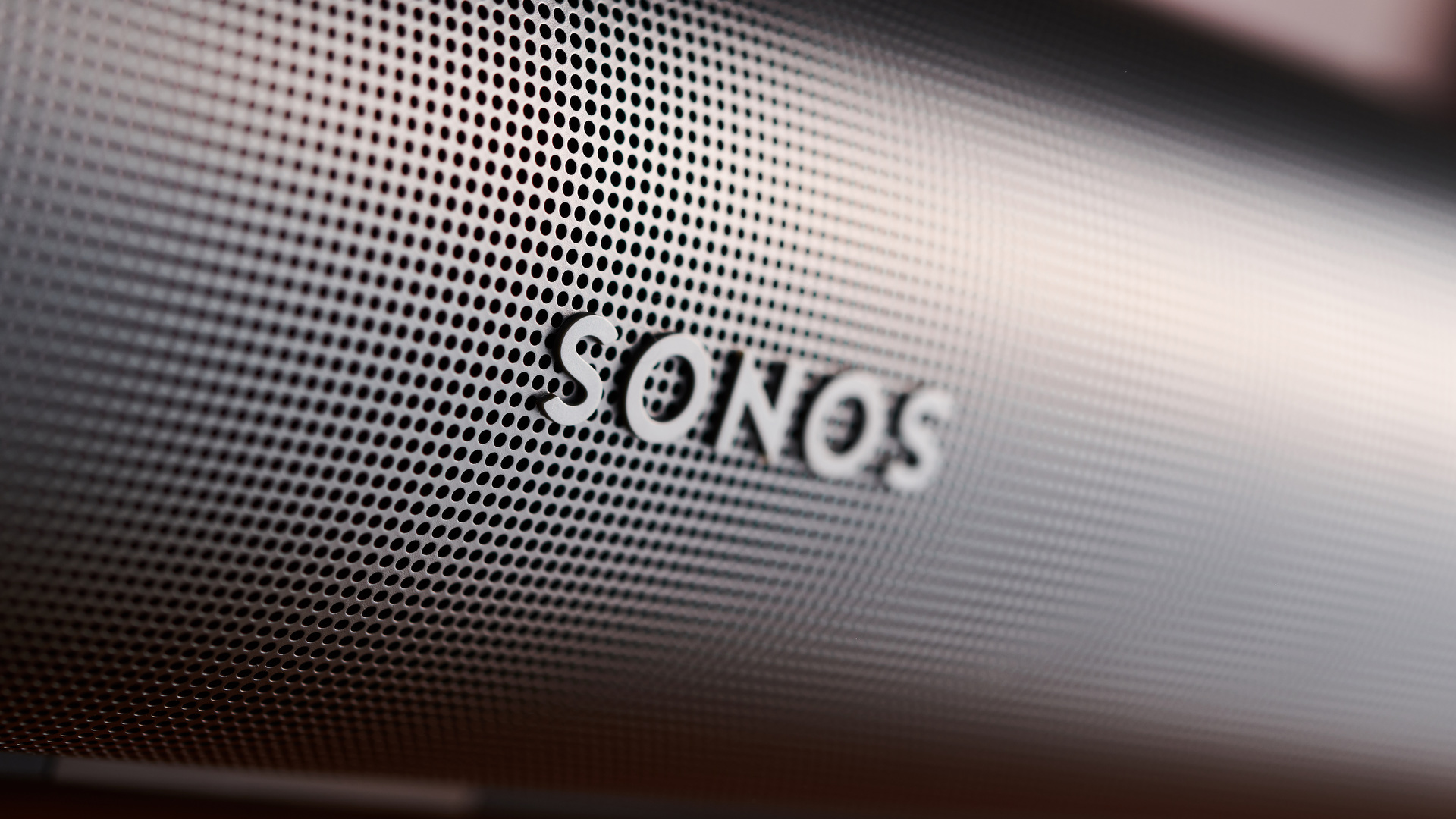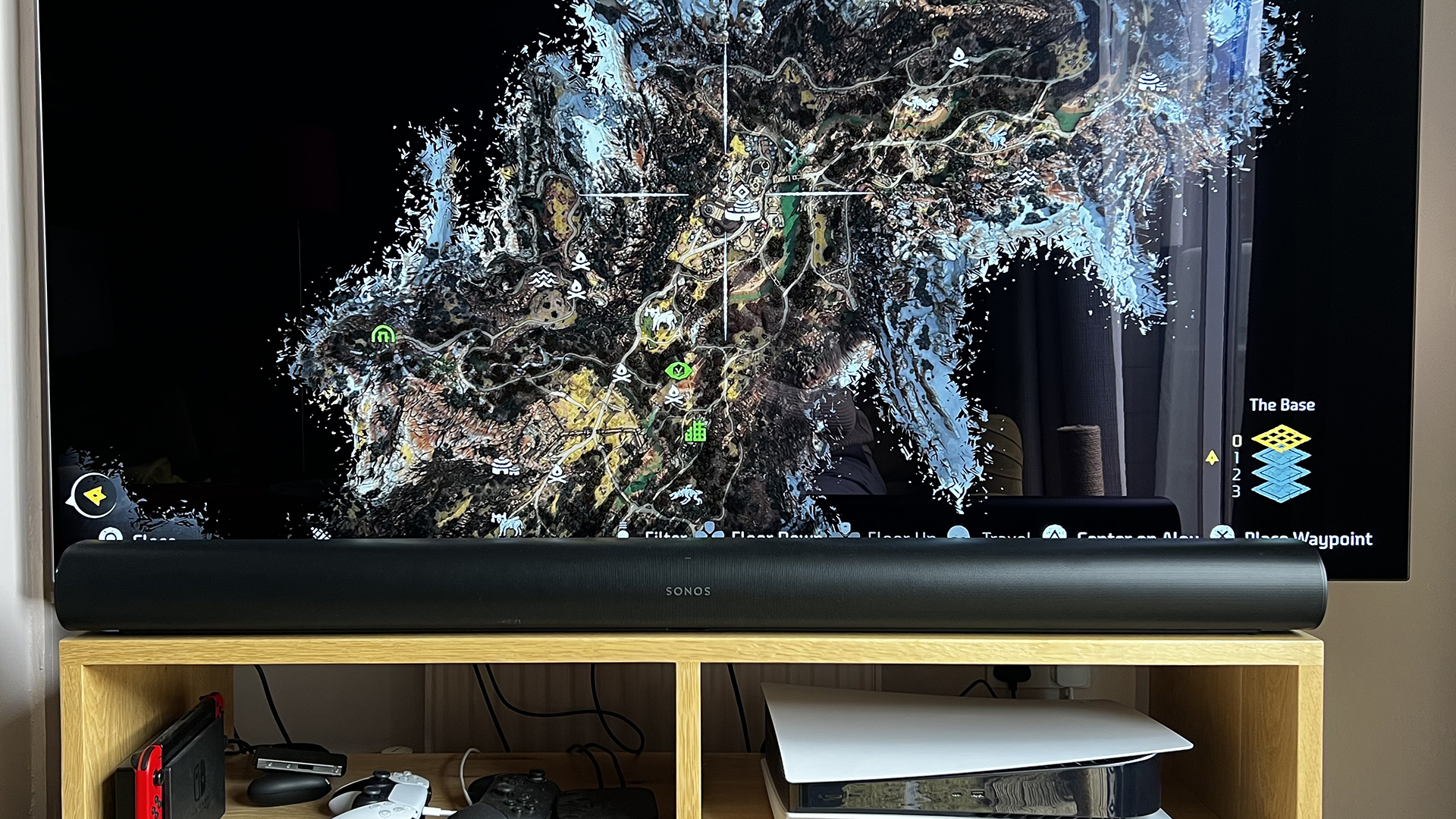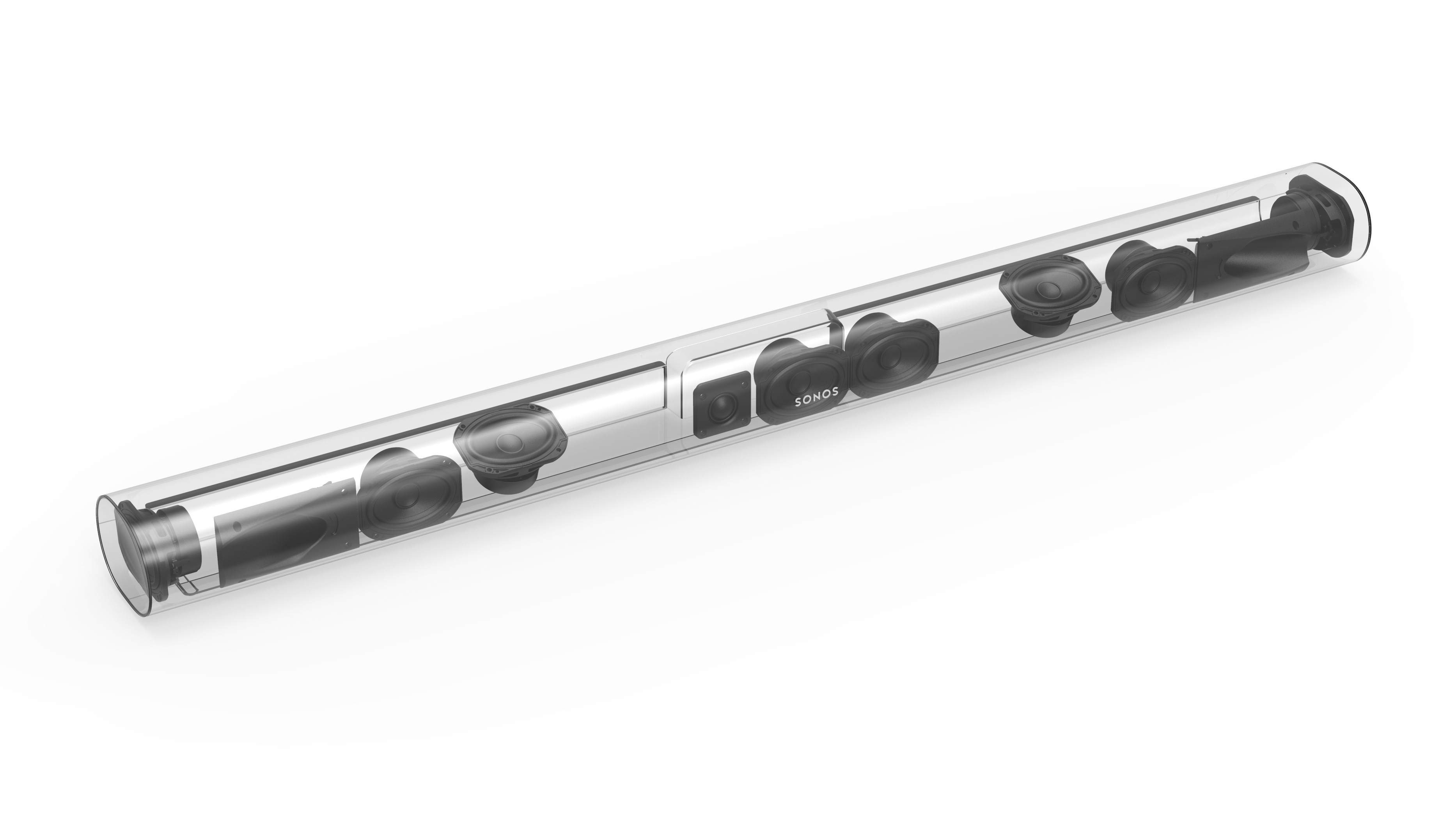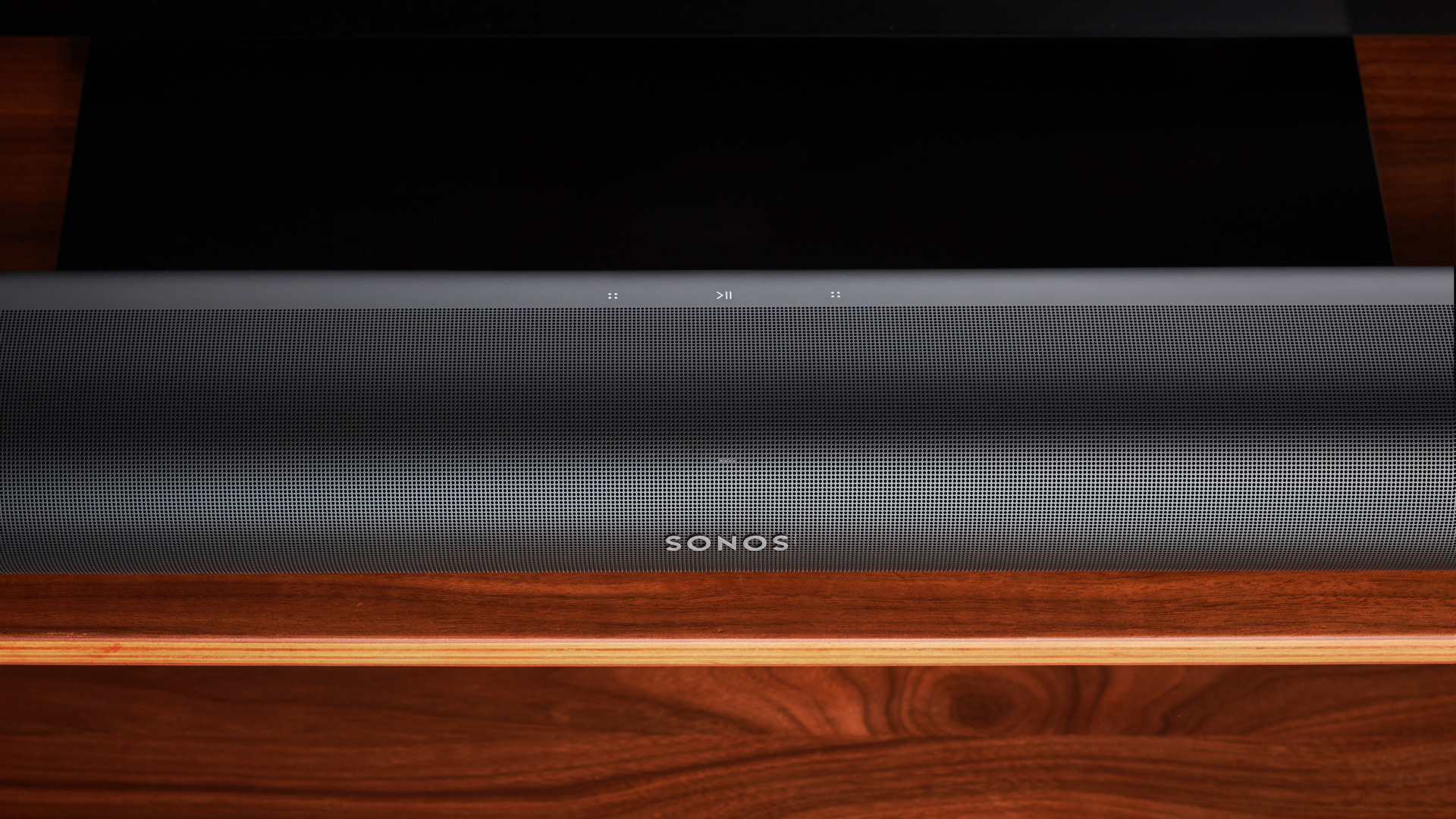
A recent report has supposedly leaked what Sonos has coming up in its 2024 lineup, and it includes a new high-end soundbar that we're assuming will turn out to be the Sonos Arc 2, effectively, even if it doesn't end up being literally called that.
While the best soundbars haven't changed much physically since the original Sonos Arc's launch in 2020 – they're still oblongs packed with speaker drivers pointing in assorted directions – there have been plenty of upgrades on the tech side. Competitors have developed how they deliver sound, as well as what features they offer, and we're even seeing some exciting moves towards soundbars losing the wired connection to the TV completely.
On top of that, Sonos acquired a company called Mayht in 2022, which boasted of being able to make speakers drivers that are a fraction of the size of the current tech, but just as powerful. So, between changes in the industry and Sonos' not-so-secret weapon, I think Sonos' next big soundbar could be something really special. Here's what I'm expecting from it.
1. It'll go wireless
Obviously, Sonos has always been a leader in wireless audio, but its soundbars still require an HDMI or optical connection to the actual TV. In the next couple of years, you're going to see a lot of companies dropping this part, though – newer Samsung soundbars such as the Samsung HW-Q990C can already work totally wirelessly with its newer TVs. LG's soundbars, meanwhile, work wirelessly with their TVs using a Wowcast HDMI adapter (though at CES 2022 the company gave me a 'watch this space' type response when I asked about dropping the need for the dongle in the future).
We've also seen the new version of DTS Play:Fi that can offer wireless Dolby Atmos audio, and Dolby Atmos' own new FlexConnect tech. So wireless home theater sound is absolutely on the way, and Sonos needs to be on board for that.
The one wrinkle here is getting support for wireless streaming from your TV. Obviously, Sonos could make an HDMI dongle, but the advantage that Samsung offers with its system is that you don't have to give an HDMI port over to just your audio. That convenience will be a big selling point for these things.
So, Sonos could try to work with TV makers for its soundbars to work with their sets (this may work with companies such as Roku or Hisense who don't have a dominant soundbar business of their own, but may not work with Samsung or LG).
Or Sonos can follow Apple's route of making a set-top streaming box that works wirelessly with its speakers – indeed, part of the Sonos leaks was that it's working on exactly that.
Perhaps Sonos will take multiple routes – either way, I think Sonos needs to stay ahead of the pack by making sure it has some kind of wireless plan ready.
2. Smaller, please – just a little

The Sonos Arc is quite a beast. I've no problem with its width – it's the same size as the best 55-inch TVs, and it's very much designed for that size or larger, so that's cool. I've no problem with its depth – it's actually shallower than some competitors, so that's useful depending on the size of your TV bench.
But it's tall and voluminous overall. There are loads of TVs with beautiful low-to-the-surface stands that have enough clearance for most soundbars to sit under them without obscuring the TV at all, but the Sonos Arc is very much the person who sits in front of you at a concert with a big hat on.
The good news is that Sonos has the ideal way to make the Arc a little smaller – the Mayht speaker tech I mentioned at the start of this article. This can theoretically offer the same power while taking up less space. And speaking of which…
3. More speakers

One option for Sonos using Mayht's speaker tech is to pile in even more speakers into roughly the same volume. This can have a bunch of advantages, including being able to add more directional channels, as well as providing even more clarity and dynamic range, potentially.
In the case of adding more channels, I'd love to see the Arc 2 move up to delivering five channels when used in a surround system, instead of the three that the original Arc does – the first-gen Arc claims to be a 5.0-channel system, but that's only when used on its own to create virtual channels.
In a surround system, it switches to three real channels – but with more angled speakers inside, it could could move to five real channels. This would mean that in a system with two Sonos Era 300 rear speakers and a Sonos Sub, we'd be talking about a 9.1.4 setup.
4. Bigger bass
One of the other potential advantages of adding more speakers is heftier bass from the new soundbar with no subwoofer. The current Sonos Arc is not lacking in low-end, but the difference from adding either the Sonos Sub Mini or (especially) full-size Sonos Sub is clear. If Sonos wants to make sure the Arc remains a great standalone soundbar option, more bass is wise.
The best bass I've heard from a single-unit soundbar is the Devialet Dione, and it achieved this with eight (!) built-in subwoofers, arranged in four sets of mirrored force-opposing pairs to avoid vibrations. Sonos has plenty of experience with this kind of engineering; it's how it designs its own subwoofers.
But here's where Mayht's tech gets even more interesting: its drivers are already two-sided and force-opposing by design. So potentially, where Devialet needed eight big drivers for bass, Sonos may only need four medium ones for a similar effect, making for a smaller or more flexible soundbar internal design (the Devialet Dione is, conservatively, the size of an aircraft carrier).
5. Better height

The one notable weakness with my Sonos Arc's sound is its Dolby Atmos height channels. Despite including real upfiring drivers, it's not as prominent as more affordable bars you can get now – and not just super-recent stuff. When I tested the Samsung HW-S800B back in 2022 – which is roughly a quarter of the volume of the Sonos Arc! – it had clearer, more directional Dolby Atmos, and cost less.
I've no complaints with the width and general quality of the Sonos Arc's sound (though no doubt these will improved anyway just through four years of development), but the height is a specific area Sonos can improve.
My absolutely dream would be for Sonos to add four height channels to the single soundbar, using differently angled drivers, but that's just me being greedy.
6. TruePlay Quick Tuning
Sonos room calibration tech, known as TruePlay, is only available on iOS. This has always been a huge shame, even though there's a rational reason why (it requires the Sonos app to know exactly how well the microphones on a device pick up sound, and that's easy for the limited number of iPhone models out there, and near-impossible for the vast sea of Android devices), but recently Sonos has introduced a partial solution. With the launch of the Sonos Era 100 and Sonos Era 300, Sonos added TruePlay Quick Tuning, which uses the microphones on the speaker itself to listen to how a series of tones sound in your room, and adjust their output based on it, to balance out reflections.
I've tested Sonos' soundbars with and without TruePlay, and using it makes a noticeable difference to detail and precision, which is especially important for reflected Dolby Atmos effects to sound convincing. Sonos has told me that TruePlay Quick Tuning is not quite as effective as the full advanced TruePlay tuning (which involves you waving your phone all over the room for a minute, as well as holding it in your ideal viewing position, for detailed audio checking), but it should be much better than nothing, which is what Android users with an Arc have had so far.







